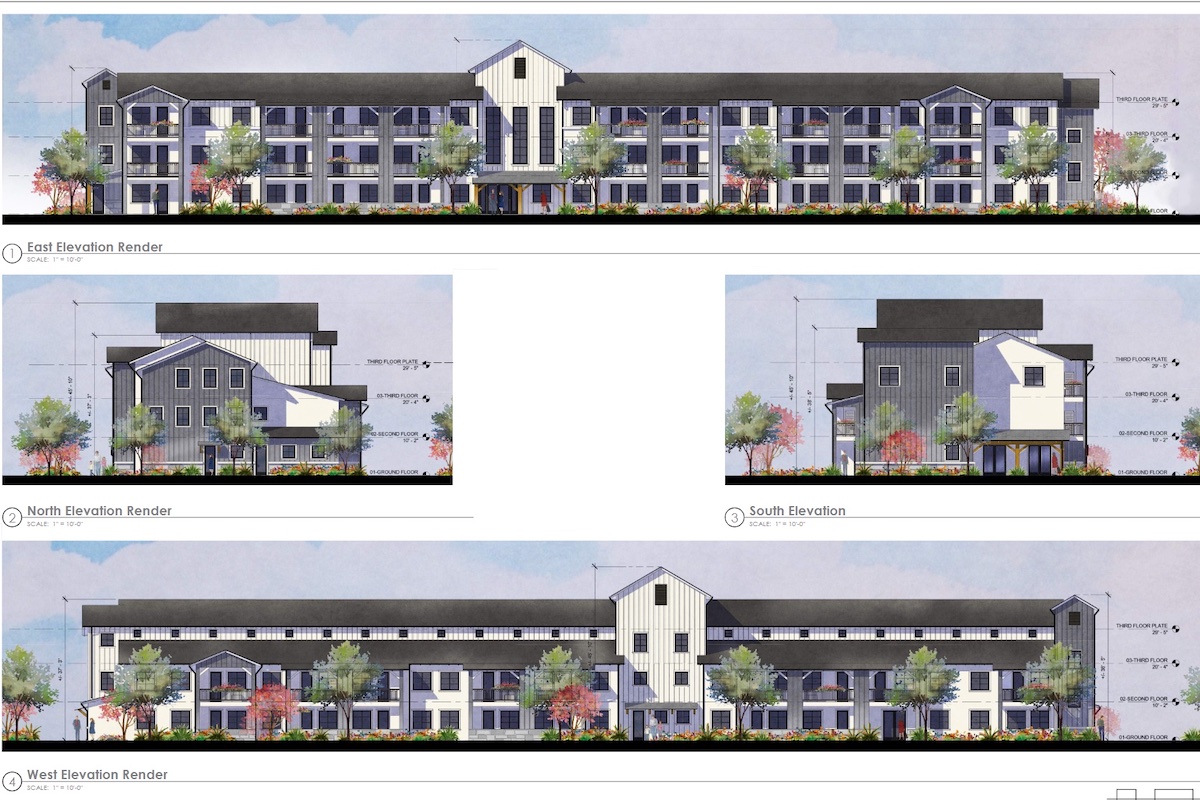Battle Brews over 173-Unit Housing Project on Bailard Avenue
Carpinteria Community, City Leadership Criticize Development During County Planning Review

A proposed 173-unit mixed-income multifamily housing development on Bailard Avenue is receiving backlash from Carpinteria residents worried about impacts on surrounding neighborhoods and from city leadership who feel left out in the planning process, which is a collaboration between the county Housing Authority and private developer Red Tail LLC.
Red Tail’s applicant, Brent Little, brought the project to the Santa Barbara County Planning Commission last week for an early concept review, which served as an opportunity for dozens of community members and local leaders to sound off during a lengthy public comment session.
The Bailard Avenue Housing Project sits on two parcels of land, just outside Carpinteria city limits at the edge of Bailard Avenue, surrounded by a residential neighborhood to the south and Monte Vista Park to the east. The land is currently owned by Carpinteria Unified School District and was slated to be a 350-person school before the plan was dropped due to declining enrollment.
Now, the property is used in part to farm organic crops, but Red Tail is under contract to purchase the land from the district for the housing development, Little said.
The concept design by RRM Design Group includes plans for seven buildings spread across 6.9 acres, with 132 market-rate and 41 lower-income affordable units. The county Housing Authority would oversee the lower-income units, including a portion which would be set aside for individuals currently experiencing homelessness.
The project would feature a 5,000-square-foot “community center,” along with walking paths, an orchard, barbecue area, dog park, and open courtyard.
Originally, the project developers were working with both Santa Barbara County and Carpinteria city officials to explore the idea of building multifamily housing at the spot, with the three parties almost entering into a memorandum of understanding before the talks ultimately fell through.
“We did this for around six months or so,” Little said, “and then for reasons we’re not aware of, the city changed their mind and decided they didn’t want to go forward with the MOU discussion and instead wanted to try and kill the project.”
Sign up for Indy Today to receive fresh news from Independent.com, in your inbox, every morning.
Carpinteria City Councilmember Wade Nomura, who was serving as the city’s mayor when the council expressed support for working on a county Housing Authority collaboration for the site in 2019, spoke in opposition of the project, explaining that he felt the city has since been left out of the planning process and was “not part of the actual development of the plan itself.”
“We thought that this was going to be a county-run property,” Nomura said. “So this is where we were kind of let down. We assumed the county was taking the lead on this, but now it looks like the Red Tail corporation has actually been doing this.”
He addressed several concerns echoed in a letter from the City Council urging the county Housing Authority to “abandon the project concept,” including concerns over the density, which through the required rezoning would go from allowing one unit every three acres to more than 20 units per acre.
“At this current time, we would not be in support of this project,” Nomura said.
A community group, Save Bailard Farm, has collected more than 2,500 signatures opposing the project, with many advocates worrying during public comment that the state’s housing needs allocation has forced the county to push the urban-rural boundary into areas that were traditionally used for agricultural purposes.
“I understand what the local citizens are saying,” said Planning Commission Chair John Parke. “I can see why they would be concerned about density, about the effect on parking on roads, and I could see why they’d be concerned about their views.”
Parke also brought up the fact that the project’s applicant had filed a preliminary application as a “builder’s remedy project,” which he said “blows the doors off what this project is,” and gives the developers “a lot more freedom with how they handle the permitting process.”
The commission took no action, as the project is still in its concept phase and will not be heard again until the developers complete the application process.



